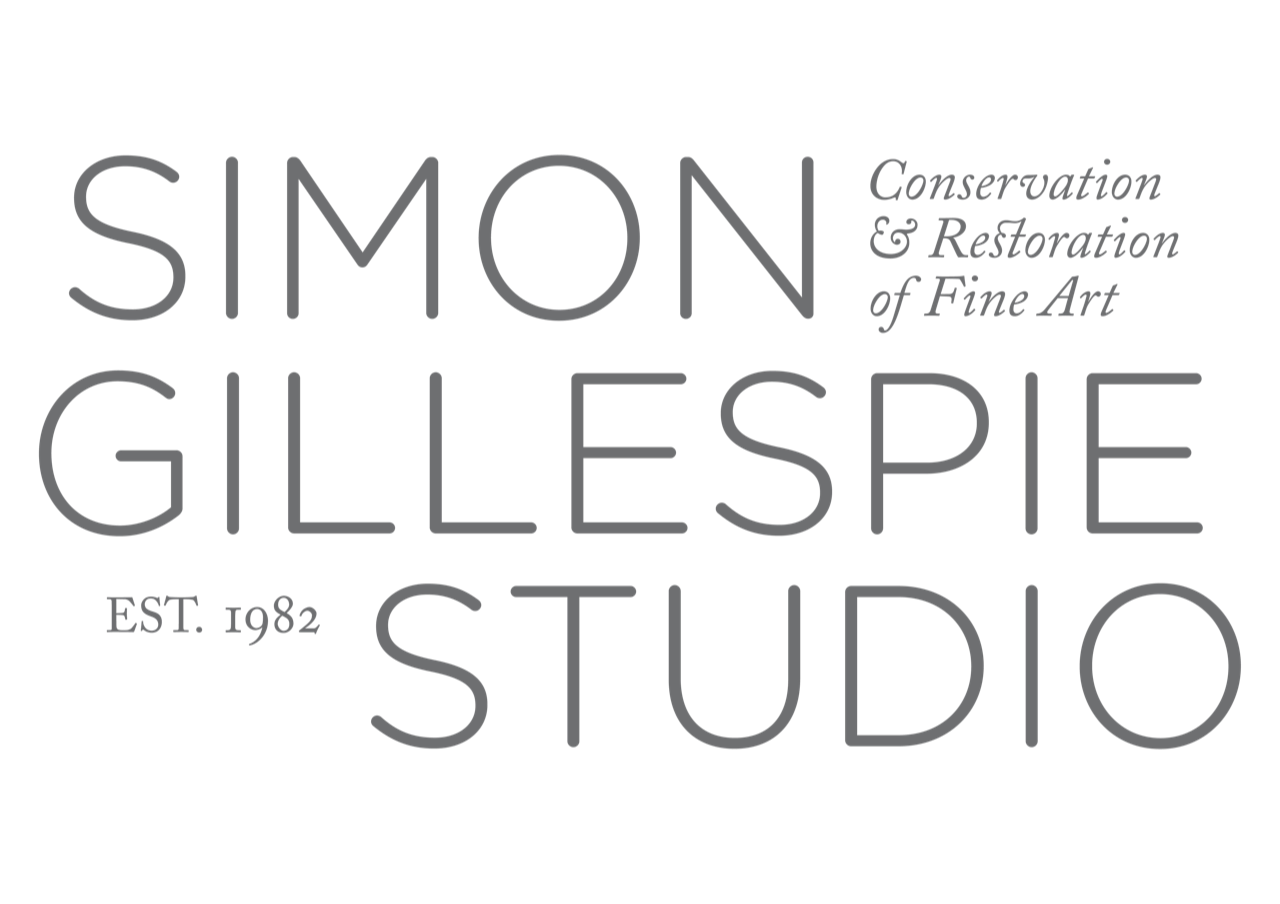‘Self-Portrait Aged 26’, by studio of Rembrandt
This work had been bought by Sir John Heathcote-Amory in 1948 as a self-portrait by Rembrandt himself. The house Sir John’s ancestor had built, Knightshayes Court in Devon, is now in National Trust care, and in the time since the purchase of the picture it has been demoted to ‘after Rembrandt’ and considered to be a later copy after the original that is at the Rijksmuseum in Amsterdam. On arrival at the studio from Knightshayes House, the small portrait was carefully assessed. The panel, a single board of oak, was found to be in good condition, aside from a vertical split in the background on the right side which did not extend the full length of the panel but stopped 4–5cm from the top. This split had been crudely repaired in the past and a patch of coarse canvas had been thickly glued to the reverse. There appeared to have been at least two campaigns of filling and retouching along the split, which extended up to 2cm either side of the split. There was a discoloured varnish. The panel had suffered woodworm infestation in the past, with a number of emergence holes visible; however, the woodworm damage was no longer active. In some parts of the painting there were small areas of cracking and tenting of the paint layers, probably caused by damage to the panel beneath. To paint the hair, the artist had turned his brush around and scratched out the curls of the hair, with varying degrees of pressure, to create highlights. In these areas, the wood of the panel and the various strata of the other layers have been exposed by the scoring action of the brush handle. This method is characteristic of Rembrandt. There was overpaint on the picture, including almost the entirety of the background, extending over some of the scratched-out curls of the sitter’s hair and the edge of his jaw and face. Paint analysis and examination under the microscope confirmed this. Dendrochronology carried out by Dr Peter Klein showed that the earliest date for the painting was 1623, and most interestingly that the panel was made from the same tree as the board used for the version of another version of this self-portrait which is in the Kassel museum (whose attribution is ‘studio of Rembrandt’). The first step of treatment was to remove the discoloured yellow varnish. In close conversation with experts from the National Trust, it was agreed that the grey overpaint should be removed to reveal the quality of the underlying paint, with its perfectly preserved brushstrokes and original tonality. An aqueous gel tailor-made for the purpose, combined with mechanical cleaning under the microscope, was found to produce satisfactory results. The crude fill of the split was removed, and new fill applied and textured. Overall, a great deal of the well-preserved original paint layer was exposed and the original colour, tone and lighting were restored, completely transforming the way the sitter sits in space and the sense of light falling upon him. The layer of paint that was revealed in the background is visually consistent with that of the other two versions of this picture, and during treatment analysis of the painting technique is consistent with techniques used by Rembrandt and his students. As a result of the treatment and analysis that was carried out, the attribution has been changed from ‘after Rembrandt’ to ‘studio of Rembrandt’, in other words, it is considered to be a painting done in Rembrandt’s studio by one of his pupils under his guidance. Some still feel that the painting may have been painted by the master himself, but in any case it is a picture that he knew.


